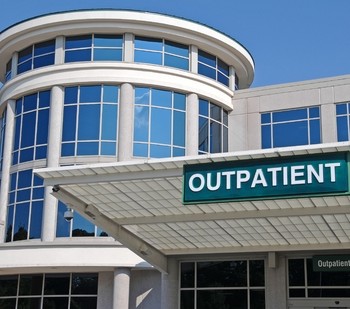Before the development of Ambulatory Surgery Centers, or ASCs, it was not uncommon for patients to wait several weeks or months to get an appointment for surgery, or to spend days or weeks in the hospital recovering. With hopes to change this by providing affordable and accessible outpatient surgery alternatives, two doctors, named Wallace Reed and John Ford, came up with the idea for freestanding ambulatory surgery centers. In 1970, this idea became a reality when they opened their first Ambulatory Surgery Center called, Surgicenter, in Phoenix, Arizona.
ASCs have grown and developed since the first in 1970, and there are now more than 5,500 of these advanced ambulatory surgery center medical facilities throughout the Unites States. Through these ASCs, physicians are able to avoid frustrations they may be faced with when performing surgery in hospitals, while also providing high-quality, cost-effective care.
ASCs provide many benefits to the patients undergoing surgery as well as the physicians operating. Doctors are able to obtain more control over the surgical practices, such as scheduling surgery times, and assembling skilled teams of nurses, anesthesiologists, etc., that are tailored to fit the needs of the physician as well as each unique patient.
In an article by the Ambulatory Surgery Center Association titled A Positive Trend in Health Care, they discuss how the ASC health care delivery model enhances patient care by allowing physicians to do the following:
- Focus exclusively on a small number of processes in a single setting, rather than having to rely on a hospital setting that has large-scale demands for space, resources and the attention of management
- Intensify quality control processes, since ambulatory surgery centers are focused on a smaller space and a small number of operating rooms
- Allow patients the ability to bring concerns directly to the physician operator, who has direct knowledge about each patient’s case, rather than deal with hospital administrators, who almost never have detailed knowledge about individual patients or their experiences
Patients can go to an ASC for many of the same procedures as hospital outpatient departments (HOPDs), but receive more efficient care without the sometimes costly overhead that comes along with a hospital procedure.
While healthcare in our country is often very costly, ambulatory surgery centers provide a cost efficient alternative to those undergoing surgery as well as to third party payers and programs, such as Medicare, which is funded through taxpayer dollars. In a study titled, Medicare Cost Saving Tied to ASCs, reports showed that the Medicare program reimburses ASC’s at 58 percent of the HOPD rate, which means Medicare sees the savings every time a procedure is done at an ambulatory surgery center rather than a hospital outpatient department.
Since there are millions of procedures performed in ASCs through the Medicare program each year, the savings quickly add up. According to this study, ambulatory surgery centers saved Medicare $2.3 billion in the year 2011 alone and are slated to save the Medicare program and its beneficiaries up to $57.6 billion more over the next ten years.
While ambulatory surgery centers are not a new concept, they are something that are becoming increasingly more popular due to the cost saving factors as well as the benefits the offer to patients and physicians.
Sources
http://www.ascassociation.org/advancingsurgicalcare/reducinghealthcarecosts/costsavings/medicarecostsavingstiedtoascs
http://www.ascassociation.org/aboutus/whatisanasc/history
http://www.ascassociation.org/advancingsurgicalcare/aboutascs/industryoverview/apositivetrendinhealthcare

